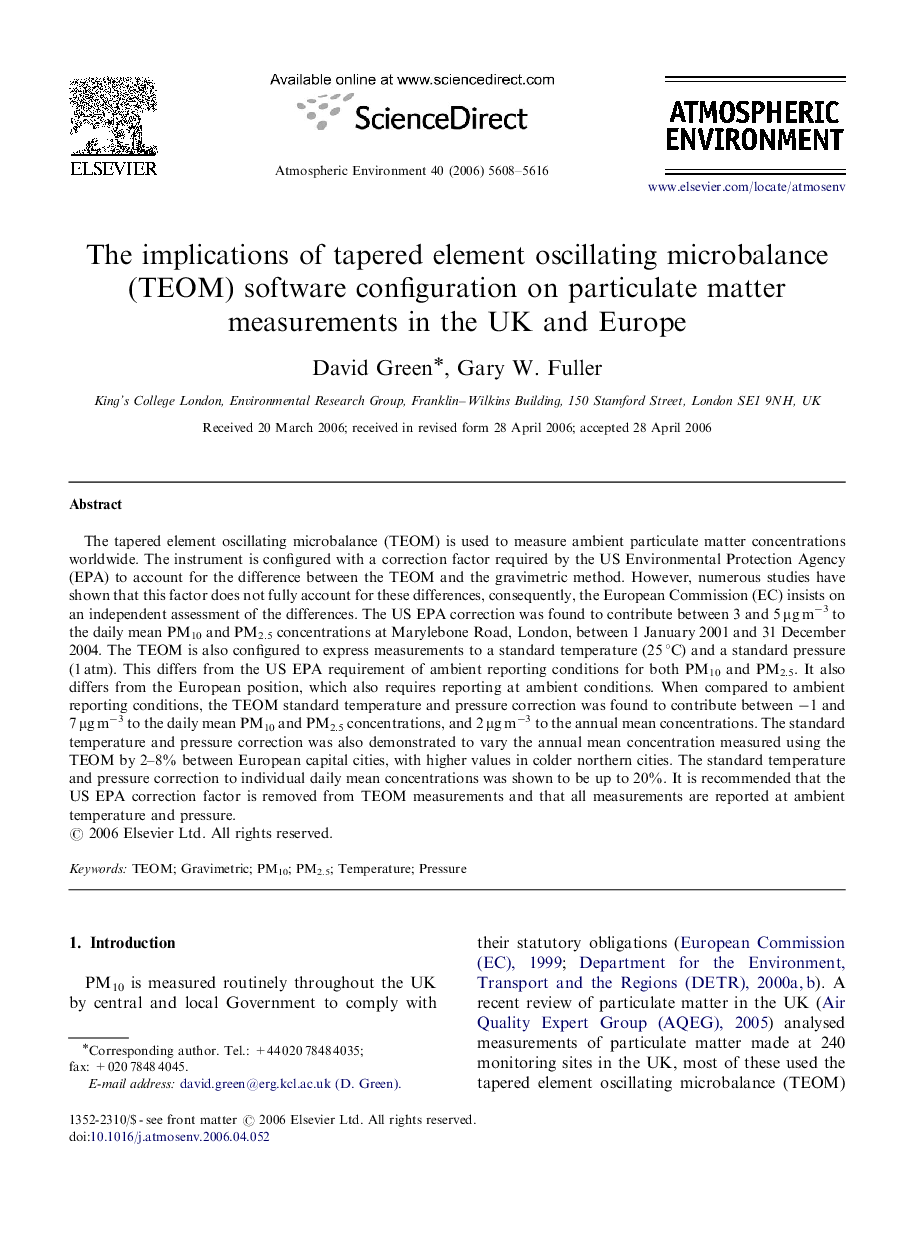| Article ID | Journal | Published Year | Pages | File Type |
|---|---|---|---|---|
| 4444365 | Atmospheric Environment | 2006 | 9 Pages |
The tapered element oscillating microbalance (TEOM) is used to measure ambient particulate matter concentrations worldwide. The instrument is configured with a correction factor required by the US Environmental Protection Agency (EPA) to account for the difference between the TEOM and the gravimetric method. However, numerous studies have shown that this factor does not fully account for these differences, consequently, the European Commission (EC) insists on an independent assessment of the differences. The US EPA correction was found to contribute between 3 and 5 μg m−3 to the daily mean PM10 and PM2.5 concentrations at Marylebone Road, London, between 1 January 2001 and 31 December 2004. The TEOM is also configured to express measurements to a standard temperature (25 °C) and a standard pressure (1 atm). This differs from the US EPA requirement of ambient reporting conditions for both PM10 and PM2.5. It also differs from the European position, which also requires reporting at ambient conditions. When compared to ambient reporting conditions, the TEOM standard temperature and pressure correction was found to contribute between −1 and 7 μg m−3 to the daily mean PM10 and PM2.5 concentrations, and 2 μg m−3 to the annual mean concentrations. The standard temperature and pressure correction was also demonstrated to vary the annual mean concentration measured using the TEOM by 2–8% between European capital cities, with higher values in colder northern cities. The standard temperature and pressure correction to individual daily mean concentrations was shown to be up to 20%. It is recommended that the US EPA correction factor is removed from TEOM measurements and that all measurements are reported at ambient temperature and pressure.
